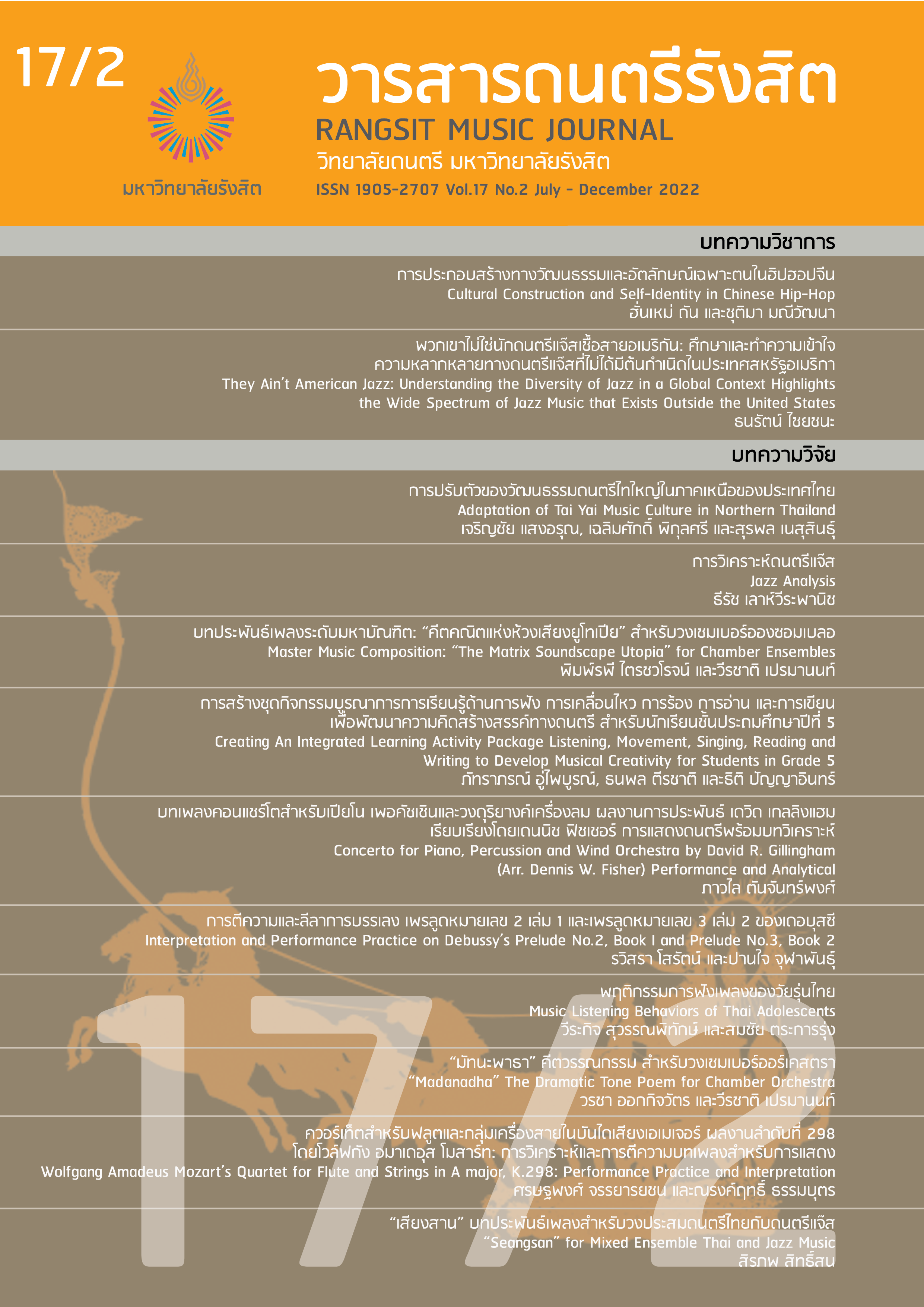Master Music Composition: “The Matrix Soundscape Utopia” for Chamber Ensembles
Keywords:
Utopia, Matrix, Chamber EnsemblesAbstract
The Matrix Soundscape Utopia for Chamber Ensembles is innovative music inspired by the sophisticated and logical concepts of the 20th Century composers. Numbers of 20th century compositions manipulated the music elements such as rhythm, pitch, harmonization, tone colors, and experiencing the new invented instruments to create new compositions. The composer came up with numbers that were selected and reinterpreted, whereby the composer’s concept was represented as the main idea composition. The numbers were divided into four movements, each having the matrix movement as main idea. The character of each movement also expanded upon different musical angles as well as the number of instruments and created the tone color to create unique tone color of each movement. Cyclic form was utilized in creating the unity among movements.
References
ณรงค์ฤทธิ์ ธรรมบุตร. การประพันธ์เพลงร่วมสมัย. กรุงเทพฯ: สำนักพิมพ์แห่งจุฬาลงกรณ์มหาวิทยาลัย, 2552.
ณัชชา พันธุ์เจริญ. พจนานุกรมศัพท์ดุริยางคศิลป์. พิมพ์ครั้งที่ 3. กรุงเทพฯ: เกศกะรัต, 2552.
____________. สังคีตลักษณ์และการวิเคราะห์. พิมพ์ครั้งที่ 5. กรุงเทพฯ: เกศกะรัต, 2553.
Boss, Jack Forrest. Schoenberg's Twelve-Tone Music: Symmetry and the Musical Idea. Cambridge: Cambridge University Press, 2014.
Lebrecht, Norman. The Companion to 20thCentury Music. New York: Simon & Schuster, 1992.
Lithai, King of Thailand. Traibhumikatha: The Story of the Three Planes of Existence. Non-fiction Government Documents. Bangkok: Amarin Printing Group, 1987.
Downloads
Published
How to Cite
Issue
Section
License
Copyright (c) 2022 Rangsit Music Journal

This work is licensed under a Creative Commons Attribution-NonCommercial-NoDerivatives 4.0 International License.







